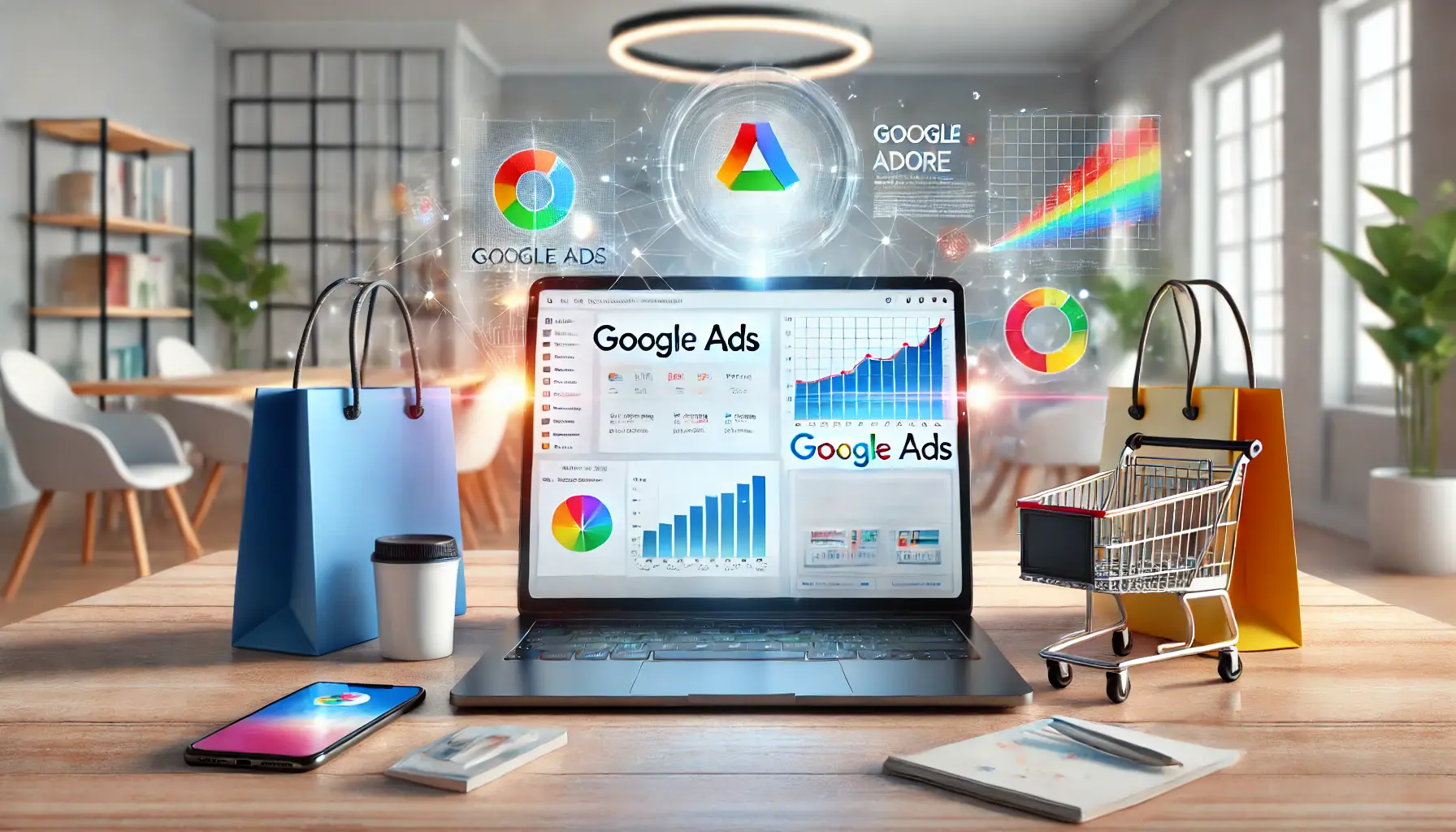In the digital age, the ecommerce landscape is more competitive than ever.
Businesses are constantly seeking innovative strategies to stand out, drive traffic, and convert visitors into loyal customers.
Among the myriad of marketing tactics available, content marketing emerges as a powerful tool to achieve these goals.
This approach not only enhances brand visibility but also establishes trust and authority in the market.
By providing valuable and relevant information to potential customers, ecommerce businesses can significantly influence purchasing decisions and foster long-term relationships with their audience.
Content marketing for ecommerce is not just about creating content; it’s about creating the right content that resonates with your target audience and drives engagement.
This involves a deep understanding of customer needs, interests, and pain points, and tailoring your content strategy to address these aspects effectively.
When executed correctly, content marketing can lead to increased organic search visibility, higher conversion rates, and ultimately, sustainable business growth.
Let’s delve into the essential components and strategies of content marketing that can propel an ecommerce business to new heights.
- Understanding the Role of Content in Ecommerce
- Strategizing Content for Diverse Audiences
- Maximizing Engagement Through Visual and Interactive Content
- SEO Optimization: Driving Organic Growth
- Content Distribution: Maximizing Reach and Engagement
- Measuring Success and ROI of Content Marketing
- Future Trends in Ecommerce Content Marketing
- Conclusion: Harnessing the Power of Content Marketing for Ecommerce Success
- Content Marketing for Ecommerce FAQs
Understanding the Role of Content in Ecommerce
The Foundation of Ecommerce Content Marketing
At its core, content marketing for ecommerce revolves around the strategic creation and distribution of content to attract, engage, and retain an audience.
This content can range from blog posts and articles to videos, infographics, and social media updates.
The primary goal is to provide value to potential customers without explicitly selling to them.
By educating, entertaining, and informing your audience, you can build a relationship based on trust and credibility, which are crucial for converting prospects into customers and advocates for your brand.
Moreover, content marketing supports various stages of the buyer’s journey, from awareness and consideration to decision and loyalty.
By addressing the specific needs and questions of potential customers at each stage, ecommerce businesses can guide them towards making a purchase and encourage repeat business.
This customer-centric approach not only enhances the shopping experience but also positions your brand as a reliable source of information and solutions in your industry.
Effective content marketing is about meeting the needs of your audience at every stage of their journey, fostering trust, and building lasting relationships.
Key Benefits of Ecommerce Content Marketing
One of the most significant advantages of content marketing for ecommerce is its ability to improve search engine optimization (SEO).
By creating high-quality, keyword-rich content, businesses can increase their visibility on search engine results pages (SERPs), attracting more organic traffic to their website.
This not only leads to higher engagement rates but also provides an opportunity to convert more visitors into customers.
Additionally, content marketing is a cost-effective strategy compared to traditional advertising methods.
While paid ads can drive immediate traffic, their effects are short-lived and can become costly over time.
In contrast, content marketing requires an upfront investment in time and resources but offers long-term benefits, including sustained traffic growth, improved brand recognition, and enhanced customer loyalty.
By investing in content marketing, ecommerce businesses can achieve a higher return on investment (ROI) and establish a competitive edge in their market.
Strategizing Content for Diverse Audiences
Understanding your audience is the cornerstone of any successful content marketing strategy.
Ecommerce businesses cater to a wide range of customers, each with unique preferences, behaviors, and pain points.
Tailoring your content to meet the diverse needs of your audience segments can significantly enhance engagement and conversion rates.
This requires a deep dive into customer data, market research, and persona development to create content that resonates with each segment of your audience.
Here are some strategies to effectively target diverse audiences through content marketing:
- Persona Development: Create detailed buyer personas representing your ideal customers. Include demographic information, interests, challenges, and online behavior to guide your content creation process.
- Customer Journey Mapping: Understand the various stages of the customer journey and create content tailored to each stage. This ensures that you provide relevant and timely information that guides prospects closer to a purchase.
- Segmentation and Personalization: Use customer data to segment your audience and personalize content based on their preferences and past interactions with your brand. Personalized content can significantly increase engagement and loyalty.
Content Formats for Every Stage of the Buyer’s Journey
Choosing the right content format is crucial for engaging your audience at different stages of the buyer’s journey.
From awareness to decision-making, each stage requires a specific type of content to move the customer closer to a purchase.
Here are some effective content formats for each stage:
- Awareness Stage: Blog posts, infographics, and educational videos that address common questions or introduce topics related to your products.
- Consideration Stage: Comparison guides, case studies, and product demos that help customers evaluate their options and understand the benefits of your products.
- Decision Stage: Customer testimonials, reviews, and detailed product descriptions that provide the final push towards making a purchase.
Incorporating a mix of content formats tailored to each stage of the buyer’s journey can significantly improve the effectiveness of your content marketing strategy.
Leveraging Data for Content Optimization
Analytics play a vital role in understanding what content performs best with your audience.
By analyzing data from your website, social media platforms, and email campaigns, you can gain insights into which topics, formats, and distribution channels are most effective.
This information allows you to refine your content strategy, focusing on high-performing areas and adjusting or discontinuing underperforming content.
Regularly reviewing your content’s performance and staying updated with industry trends and customer feedback are essential for maintaining a dynamic and effective content marketing strategy.
This iterative process ensures that your content remains relevant, engaging, and aligned with your audience’s evolving needs.
Maximizing Engagement Through Visual and Interactive Content
In today’s fast-paced digital world, capturing and retaining the attention of your audience is more challenging than ever.
Visual and interactive content has emerged as a powerful tool to engage users, convey information more effectively, and enhance the user experience.
By incorporating visually appealing and interactive elements into your content strategy, you can significantly increase engagement, encourage social sharing, and drive more traffic to your ecommerce site.
Embracing the Power of Visual Content
Visual content, including images, videos, infographics, and animations, can make your content more engaging and memorable.
Here’s how to leverage visual content effectively:
- High-Quality Product Images: Use professional, high-resolution images to showcase your products from multiple angles. This helps customers get a better sense of what they’re purchasing and can reduce hesitation.
- Informative Infographics: Create infographics to explain complex concepts, share statistics, or highlight product features in an easily digestible format.
- Engaging Videos: Product demonstrations, how-to guides, and behind-the-scenes looks can add a personal touch to your brand and help customers understand the value of your products.
Interactive Content for Enhanced User Experience
Interactive content not only engages users but also provides personalized experiences that can guide them through the buyer’s journey.
Consider incorporating the following interactive elements:
- Quizzes and Surveys: Engage your audience with quizzes and surveys related to your products or industry. This can also provide valuable insights into customer preferences.
- Augmented Reality (AR): AR experiences allow customers to visualize products in their own space or see how items would look on them, significantly enhancing the shopping experience.
- Interactive Guides: Use interactive guides to help customers make informed decisions based on their specific needs and preferences.
Visual and interactive content not only makes your brand more memorable but also drives deeper engagement, encouraging users to spend more time on your site and share your content with others.
By prioritizing visual and interactive content, ecommerce businesses can create more engaging and immersive experiences that captivate their audience, differentiate their brand, and ultimately drive higher conversion rates.
SEO Optimization: Driving Organic Growth
For ecommerce businesses, achieving visibility in search engine results is crucial for driving organic traffic and attracting potential customers.
SEO optimization is a fundamental aspect of content marketing that ensures your content is discoverable by search engines and ranks well for relevant keywords.
By implementing effective SEO strategies, you can increase your ecommerce site’s visibility, attract a targeted audience, and enhance the likelihood of conversion.
Here are key strategies for optimizing your content for SEO:
- Keyword Research: Identify high-value keywords related to your products and industry. Use these keywords strategically in your content, including titles, headings, and throughout the body text, to improve your rankings in search engine results.
- On-Page SEO: Optimize your content’s meta titles, descriptions, and URLs to include target keywords. Ensure your website’s structure and internal linking are optimized for search engines and user navigation.
- Quality Content: Create informative, valuable, and engaging content that addresses the needs and interests of your target audience. High-quality content is more likely to be shared and linked to, further boosting your SEO efforts.
- Mobile Optimization: Ensure your website is mobile-friendly, as a significant portion of online shopping is done on mobile devices. A responsive design improves user experience and contributes to better search engine rankings.
Building Backlinks for Ecommerce Sites
Backlinks, or inbound links from other websites, are a critical factor in SEO.
They signal to search engines that other websites consider your content valuable and authoritative.
Here are ways to build backlinks for your ecommerce site:
- Guest Blogging: Write guest posts for reputable sites in your industry, including a link back to your ecommerce site.
- Influencer Collaborations: Partner with influencers to create content that links back to your site. This can also help you reach a wider audience.
- Content Promotion: Actively promote your content on social media, forums, and other online platforms to encourage sharing and linking.
Consistent SEO optimization ensures that your content remains visible and relevant, driving ongoing organic traffic to your ecommerce site and supporting long-term growth.
By integrating these SEO strategies into your content marketing plan, you can enhance your ecommerce site’s search engine visibility, attract more qualified traffic, and ultimately, increase sales and revenue.
Content Distribution: Maximizing Reach and Engagement
Creating high-quality content is only half the battle; ensuring it reaches and engages your target audience is equally important.
Content distribution involves strategically sharing your content across various channels to maximize visibility, engagement, and conversions.
An effective content distribution strategy can significantly amplify the impact of your content marketing efforts, driving more traffic to your ecommerce site and increasing brand awareness.
Here are effective channels and strategies for distributing your ecommerce content:
- Email Marketing: Use email newsletters to share your latest content with subscribers. Personalize emails based on user behavior and preferences to increase open rates and engagement.
- Social Media: Share your content on social media platforms where your target audience is active. Use a mix of organic posts and paid promotions to extend your reach and drive traffic back to your site.
- Influencer Partnerships: Collaborate with influencers in your niche to share your content with their followers. This can help you tap into new audiences and build credibility for your brand.
- Content Syndication: Republish your content on larger platforms or industry blogs to reach a broader audience. Ensure you follow best practices to avoid SEO penalties for duplicate content.
Leveraging Analytics for Content Optimization
Measuring the performance of your content distribution efforts is crucial for understanding what works and what doesn’t.
Use analytics tools to track metrics such as website traffic, engagement rates, conversion rates, and social shares.
Analyzing this data allows you to refine your distribution strategy, focusing on channels and types of content that deliver the best results.
Additionally, monitoring user feedback and engagement can provide insights into audience preferences and content effectiveness.
This feedback loop is essential for continuously improving your content strategy and ensuring that your content remains relevant and engaging to your audience.
Remember, the goal of content distribution is not just to reach as many people as possible but to engage and convert your target audience into loyal customers.
By adopting a multi-channel content distribution approach and leveraging analytics for optimization, ecommerce businesses can effectively increase the reach and impact of their content marketing efforts, driving sustainable growth and success.
Measuring Success and ROI of Content Marketing
For ecommerce businesses, understanding the return on investment (ROI) of content marketing efforts is crucial for justifying the allocation of resources and for strategic planning.
Measuring the success and ROI of your content marketing involves tracking a variety of metrics that reflect engagement, conversions, and overall business impact.
This data not only demonstrates the value of content marketing but also guides future strategy adjustments for improved performance.
Key metrics to track for measuring content marketing success include:
- Website Traffic: Monitor the volume of visitors to your site and the specific pages they visit. This indicates the effectiveness of your content in attracting potential customers.
- Engagement Metrics: Track metrics such as time on page, bounce rate, and pages per session to understand how engaging your content is for your audience.
- Conversion Rates: Measure how effectively your content leads to desired actions, such as product purchases, sign-ups, or downloads. This directly ties content efforts to revenue generation.
- Social Shares and Comments: Analyze the social engagement your content receives. High levels of shares and comments indicate that your content resonates with your audience and has a wider reach.
- SEO Rankings: Track the search engine rankings for your target keywords. Higher rankings can lead to increased organic traffic and visibility for your ecommerce site.
Calculating Content Marketing ROI
To calculate the ROI of your content marketing efforts, you need to quantify both the costs of creating and distributing content and the revenue generated from these efforts.
This involves:
- Identifying Costs: Include all expenses related to content creation, distribution, and promotion, such as writer fees, software subscriptions, and advertising costs.
- Measuring Revenue: Determine the revenue attributed to content marketing, which can include direct sales from content-driven traffic, lead conversions, and customer retention.
- ROI Formula: Use the formula [(Revenue from Content Marketing – Cost of Content Marketing) / Cost of Content Marketing] x 100 to calculate the ROI percentage.
Regularly measuring the success and ROI of your content marketing allows you to justify your investment, optimize your strategy, and demonstrate the tangible business value of your content efforts.
By establishing a systematic approach to measuring content marketing success and ROI, ecommerce businesses can make data-driven decisions, refine their content strategies, and continuously enhance the effectiveness of their marketing efforts to achieve sustainable growth.
Future Trends in Ecommerce Content Marketing
The landscape of ecommerce content marketing is ever-evolving, with new trends and technologies shaping the way brands connect with their audiences.
Staying ahead of these trends is crucial for ecommerce businesses aiming to maintain a competitive edge and foster growth in an increasingly digital marketplace.
As we look towards the future, several key trends are poised to influence ecommerce content marketing strategies significantly.
Emerging trends in ecommerce content marketing include:
- Personalization and AI: Advances in artificial intelligence (AI) and machine learning are enabling more sophisticated content personalization. Ecommerce brands can leverage these technologies to deliver highly personalized content experiences, tailored to individual user preferences and behaviors.
- Interactive and Immersive Content: As technology advances, expect to see a rise in interactive and immersive content formats, such as augmented reality (AR) and virtual reality (VR). These formats offer unique ways to engage customers and provide them with memorable brand experiences.
- Voice Search Optimization: With the increasing use of voice-activated devices, optimizing content for voice search will become more important. This involves creating conversational content that answers questions and appears in voice search results.
- Video Content Dominance: Video content, particularly short-form videos, will continue to dominate social media platforms. Ecommerce brands should focus on creating engaging, informative, and entertaining videos to capture audience attention and drive engagement.
- Content Communities: Building communities around your content can foster brand loyalty and advocacy. Platforms like Facebook Groups and branded forums provide spaces for customers to connect, share experiences, and engage with your content on a deeper level.
Adapting to Changing Consumer Behaviors
As consumer behaviors and preferences evolve, ecommerce businesses must adapt their content marketing strategies to meet these changes.
This involves staying informed about industry trends, listening to customer feedback, and being willing to experiment with new content formats and channels.
By remaining agile and responsive to the market, ecommerce brands can continue to deliver valuable and relevant content that resonates with their audience and drives business growth.
Assuming that what worked yesterday will work tomorrow is a common pitfall in content marketing. Continuous adaptation and innovation are key to staying relevant in the dynamic ecommerce landscape.
Embracing these future trends and adapting to changing consumer behaviors will enable ecommerce businesses to leverage content marketing more effectively, enhancing customer engagement, driving sales, and securing a strong position in the digital marketplace.
Conclusion: Harnessing the Power of Content Marketing for Ecommerce Success
In the rapidly evolving digital marketplace, content marketing for ecommerce has emerged as a cornerstone strategy for businesses aiming to drive growth, engage customers, and stand out from the competition.
As we’ve explored, the journey to content marketing success involves a multifaceted approach, from understanding your audience and creating diverse content to optimizing for SEO and leveraging the latest trends and technologies.
Key Takeaways for Ecommerce Brands
The essence of effective content marketing lies in its ability to connect with the audience on a personal level, providing value beyond just selling products.
Here are some critical takeaways for ecommerce brands looking to maximize their content marketing efforts:
- Develop a deep understanding of your target audience and tailor your content to meet their specific needs and preferences.
- Embrace a variety of content formats, including visual, interactive, and personalized content, to engage users at every stage of the buyer’s journey.
- Invest in SEO optimization to ensure your content is discoverable and ranks well on search engine results pages, driving organic growth.
- Adopt a strategic approach to content distribution, utilizing multiple channels to reach and engage your target audience effectively.
- Regularly measure the success and ROI of your content marketing efforts to refine your strategy and ensure it delivers tangible business value.
- Stay ahead of emerging trends, such as AI-driven personalization and immersive content experiences, to keep your content marketing strategy fresh and relevant.
Ultimately, content marketing for ecommerce is not a one-size-fits-all solution.
It requires ongoing experimentation, adaptation, and a commitment to creating high-quality content that resonates with your audience.
By embracing these principles and continuously refining your approach, ecommerce businesses can harness the power of content marketing to achieve sustainable growth and success in the digital age.
Embracing the Future of Ecommerce Content Marketing
As we look to the future, the role of content marketing in ecommerce will only continue to grow.
The brands that succeed will be those that not only keep pace with the latest trends and technologies but also remain steadfast in their commitment to delivering genuine value to their customers through content.
In an increasingly crowded digital landscape, content marketing offers a powerful way for ecommerce brands to differentiate themselves, build lasting relationships with their customers, and drive meaningful business outcomes.
Whether you’re just starting out or looking to elevate your existing content marketing strategy, the journey towards ecommerce success is a continuous one.
Embrace the challenge, stay focused on your audience, and let your content be the bridge that connects your brand with the hearts and minds of your customers.
The future of ecommerce content marketing is bright, and the opportunities for growth and engagement are limitless.
Want your website to top Google search rankings? Leave the SEO to our professional agency!
Content Marketing for Ecommerce FAQs
Explore commonly asked questions about leveraging content marketing to fuel ecommerce growth, providing insights into effective strategies and best practices.
Ecommerce content marketing involves creating and sharing valuable content to attract, engage, and convert online shoppers into customers, enhancing brand visibility and loyalty.
It builds brand awareness, improves SEO, engages potential customers, and supports them through the buying journey, ultimately driving conversions and loyalty.
By providing valuable information, content marketing nurtures leads, influences purchasing decisions, and enhances the customer experience, leading to increased sales.
Product guides, how-to videos, customer testimonials, and engaging blog posts are highly effective in attracting and retaining ecommerce customers.
By incorporating relevant keywords, optimizing meta tags, creating quality backlinks, and ensuring mobile-friendliness to improve search rankings and visibility.
Yes, social media content can significantly boost ecommerce growth by increasing brand exposure, engaging with the audience, and driving traffic to the website.
Personalization enhances content relevance, improves user experience, and increases engagement rates, making marketing efforts more effective.
Success is measured by tracking website traffic, engagement metrics, conversion rates, and ROI to evaluate content’s impact on business goals.













